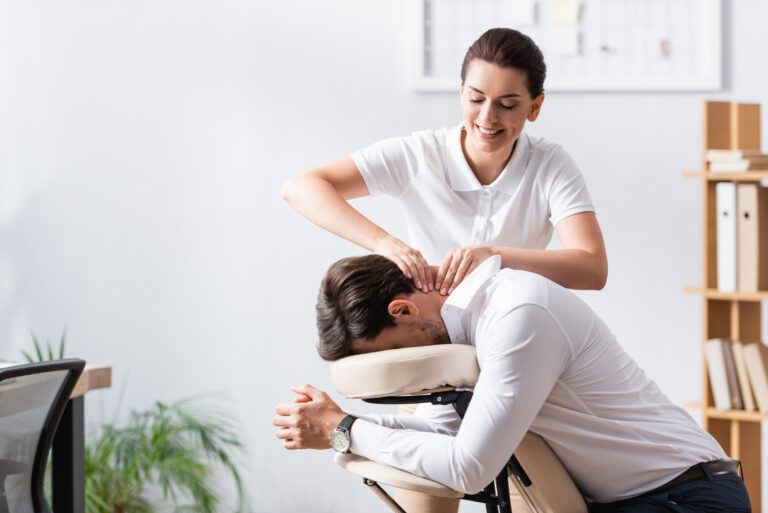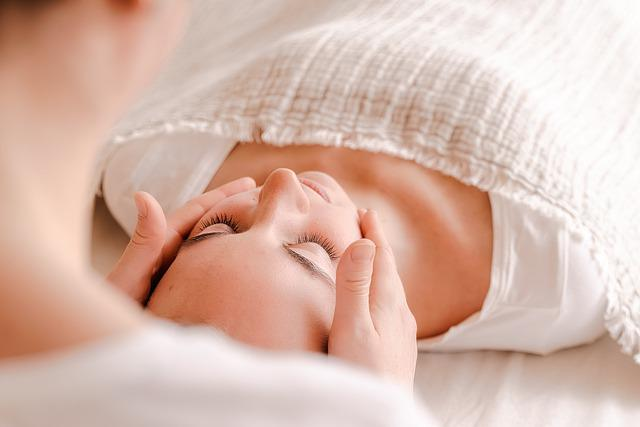A Quintessential Complement to a Relaxing Massage
There are many known benefits of massage therapy, from improved circulation and reduced stress to stimulation of the lymphatic system and increased joint flexibility. Many medical resources encourage readers to get massages, including Mayo Clinic and WebMD, and the major reason why is because people seem to be noticing a difference.
As the practice of massage continues to expand throughout the Western world, many variations of the treatment have come to light. From deep tissue and sports massage to Swedish and Thai massage to craniosacral therapy, there is an extensive number of techniques along with qualified specialists who are skilled at their respective styles of bodywork.
One form of massage therapy, known as hot stone therapy, has become a restorative, relaxing, and rejuvenating favorite. In order to encourage a better understanding of this massage practice, in this article we discuss hot stone therapy, explaining what exactly it consists of, along with the potential benefits of this treatment.
What Is Hot Stone Therapy?
Hot stone therapy is the practice of using heat-retaining flat rocks, typically basalt, on specific regions of the body (often referred to as acupressure points.) Hot stone therapy often begins with deep tissue massage (such as Swedish massage) to loosen tight areas of the body. Then, flat river stones that have been warmed between 120-130 degrees Fahrenheit are aligned along the spine, palms of the hands, bottoms of the feet, and close to the toes. Your massage therapist may place them in other regions of the body as well, but usually, the spine is the most common region of application.
The stones are warmed in a specialized stone heater, which looks much like a crockpot. This is done to better control the temperature of the rocks in order to prevent any chances of burns or scalding.
Massage professionals do not use hot plates, microwaves, or ovens to warm the rocks, so to avoid injury, be sure to look out for any mispractice that might take place amongst inexperienced massage therapists.
Hot Stone Therapy: The Benefits
Due to the immensely relaxing nature of hot stone therapy, it possesses a number of benefits. The primary way in which this treatment helps is by loosening muscles, which is ideal for those who have aches and pains on the body.
Although many do receive hot stone therapy because of the benefits it might provide, their accounts of success are more so personal for research is seriously lacking. That is not to say, however, that it does not exist.
Moderate-pressure massage, which hot stone therapy does qualify as has been said to assist with conditions such as rheumatoid arthritis. A 2013 study published in the journal Complementary Therapies in Clinical Practice reported that participants with arthritis felt less pain after a mere month of medium pressure massage.
In addition to physical pain, hot stone massage is also at times linked to potentially reduced stress, and in turn, reduced anxiety and an overall better mood. A study published Bowling Green State University in 1997 found that those who received a 15-minute chair massage during a break were reportedly less stressed than those who did not and merely rested on their break.
Although related specifically to the broad description of massage, a 2014 study published in the journal Sleep Science found that postmenopausal women who were dealing with difficult insomnia slept better after receiving a massage, expressing it is a promising solution for such applications.
In addition to potentially reducing stress or anxiety, improving insomnia, and lessening various aches and pains, receiving a hot stone massage is a pleasant experience, particularly for those who enjoy receiving rejuvenating bodywork and find it to be effective.
While these studies mentioned are all a start, they do not fully confirm that hot stone therapy is a treatment for any of the above referenced medical conditions. As always, communicate with your doctor first if you determine that massage or hot stone therapy is the right option for your medical needs.
How to Practice Hot Stone Therapy
The process of application throughout a hot stone therapy appointment is fairly straight forward and normally unfolds in the following steps:
You will arrive at your appointment and the receptionist will have you fill out a health questionnaire if you are a first-time client.
Someone will guide you into a dressing room where you can prepare for your massage by removing your garments. Begin to relax already, the massage will be soon.
Your massage therapist will greet you and have you get situated comfortably on the massage table.
The massage therapist will have heated basalt or smooth stones in a specialized stone warmer which will heat the rocks to 120-130 degrees Fahrenheit typically.
Your massage therapist will likely begin the massage by performing some type of deep tissue technique, for instance, Swedish massage. They may then refer to an anatomy chart for stone placement or simply place the stones on the acupressure points along the body that are most tailored to you.
Your massage therapist will likely ask you how you are feeling throughout the massage, but you should always remember to speak up and ask for any adjustments as desired.
The hot stones will be placed along the body and then rubbed into the tissues and muscles of the body to further stimulate healing, recovery, and rejuvenation. Because of the oils and application, the smooth rocks will slide with ease and the experience is often said to be comforting.
Some things to note:
Consider arriving a bit earlier to your appointment. Allow sufficient time to speak with the receptionist if need be, as well as prepare mentally and physically for such a relaxing experience. Spas often require you to fill out a questionnaire if you are a first time client, so you do not want to feel rushed or in a hurry right before your treatment. Arriving well in advance (10 minutes is plenty) will save yourself from any extra stress.
Communicate clearly with your massage therapist. Are you experiencing pain? Are the stones too hot? Speak up and let your specialist know right away! Hot stone therapy, although at times a little intense, should not be painful or uncomfortable. Although sometimes deep tissue massage can feel overwhelming, it should not leave you suffering. Your massage therapist wants your experience to be as pleasant as possible and this can be further achieved with a straightforward transmission of how you are feeling.
Drink plenty of water after your treatment! The heat from the stones can be at times dehydrating, and in general, it is important for the body to rehydrate after any form of bodywork. Opting for an herbal, caffeine-free tea is also a delightful and health-inducing way to unwind after a massage.
Use Your Discretion with Hot Stone Therapy
Hot stone therapy is not right for everyone. In fact, those who have heart disease, migraines, arthritis, decreased pain sensitivity, metal implants, tumors, diabetes, or high blood pressure should not agree to receive hot stone therapy. Please consult your doctor beforehand if you intend to get hot stone therapy and have a medical condition.
Understanding Hot Stone Therapy: Final Words
Overall, many clients experience hot stone therapy as a pleasant and refreshing body treatment that helps knots, aches, and pains release because of deeper applied pressure and increased heat. Although not the right option for everyone, those who are fond of deep tissue massage and intense application of pressure generally really enjoy hot stone therapy, and some claim the heat from the rocks is comforting and soothing.
Interested in becoming a licensed massage therapist? Searching for massage schools or career colleges in San Diego? ICOHS College is a non-profit vocational school offering a Professional Massage Therapist program. Our dedicated educators are passionate about supporting students on their journey towards reaching their career goals.
Reach out today and request more information to learn more about the Professional Massage Therapist program.










